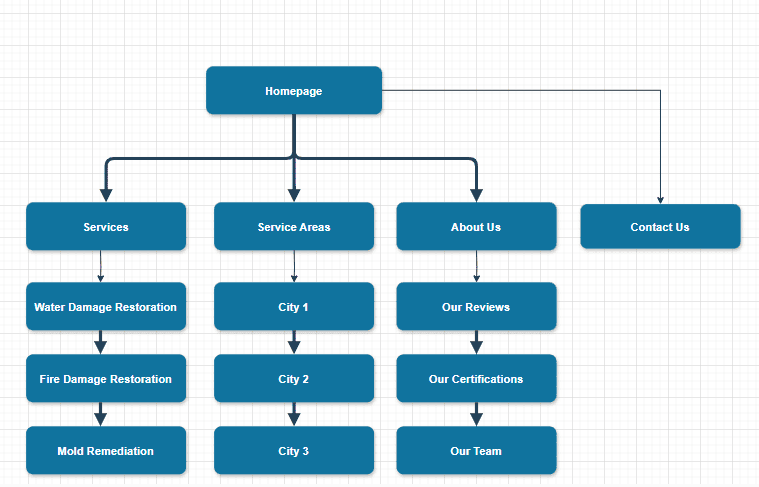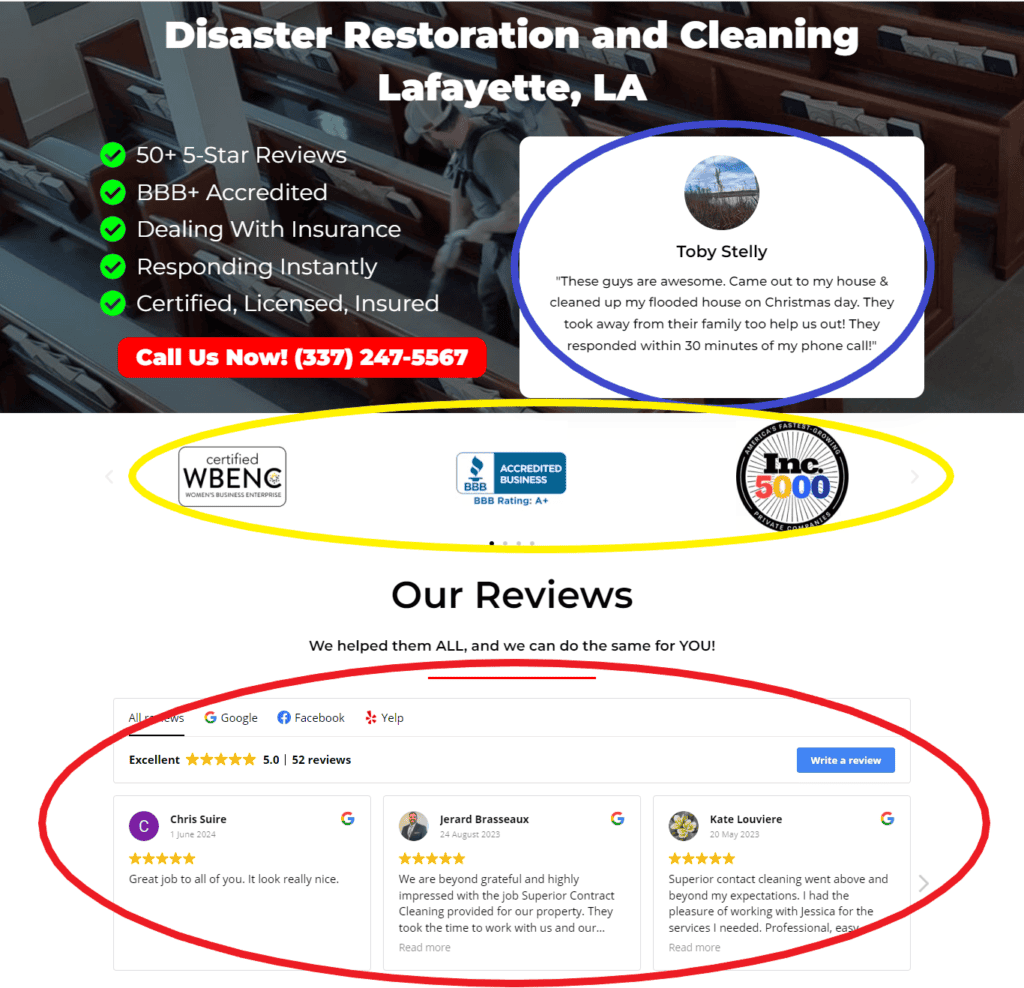Use for what? I guess what you’re really asking is one of the following things:
- How many keywords should I use for my entire website?
- How many keywords should I use per page?
- How many times should I mention my target keyword on my page?
While in our local SEO keyword research article you’ll learn pretty much everything you need to know about keywords, their meaning, and their value, this article will focus more on the implementation.
So, we’ll go over exactly that today – where, how, and how many times to use keywords in your SEO (primarily local SEO, but the principles apply for all types of SEO).

~6 Minute Read
Quick Answer
Use as many keywords as you want for your entire website. In fact, the more keywords you use, *usually*, it leads to more money in the long run, AS LONG as they are the right keywords. Per page, the number of keywords you use will depend on the page's goal and a few other things. Your money keyword can be mentioned as many times as you like on the page, while the text provides value and is perfectly readable.
How Many Keywords to Use in Your Entire SEO Campaign?
As many as you like. Go nuclear.
Just kidding, listen up.
There is no “cap” of keywords a certain website can target with their SEO. Now, whether or not you’ll actually rank for those same keywords is a completely different story.
If you’ve read our article on how to know if your SEO is working, you’d have seen that one of the biggest positive signs is more and more keywords your website is being positioned for.
Some may say that you can’t rank for a keyword if your website is not relevant.
And while this is true, you can cover more and more topics with more and more pages and eventually expand into other topics if the niches are coherent.
For instance, roofing websites will likely be able to rank for solar keywords, but probably not for medical keywords (although they could for keywords like “roofing services for medical clinics” or “roofing services for hospitals”).
Where most people mess up is:
- Wrong keyword selection, AKA targeting keywords that won’t make you money, whether directly or indirectly.
- Building out your website in a way that prevents growth (wrong site “structuring”).
- Writing bad content that won’t rank.
Wrong Keyword Selection
What does this mean?
As we’ve mentioned a few times on this blog, not every keyword, even if related to your industry, leads to money.
And while there are instances where doing SEO for the sake of SEO and not necessarily money (directly) may make sense, you still need to know a few things:
- Rankings for the terms “Mediterranean Roof Styles” and “Roofers Miami, FL” have absolutely different effects on your wallet.
While there might be more people, perhaps thousands, looking for roofing styles, people searching for roofers in their city are way more inclined to buy, given their intent.
The first topic is something people might be looking for when they’re bored but roofers in Miami? Only people interested in a service (whether right at the moment or later on) would be looking for something like that.
- Rankings for the terms “Roofing Contractors Miami, FL” and “Roofing Costs in Miami” can both make you money, but not in the same way.
What does this now mean?
The first keyword carries the intent of finding a contractor for the customers’ needs, whereas the latter keyword carries the intent of learning about the costs of roofing, and THEN finding a contractor (whether, again, right at the moment or later on).
It’s important that you know these key differences between keywords or you’ll mess up your SEO before even starting.
Wrong Website Structure
Here’s another common place where people mess up.
I see it all the time:
- ABCRoofing.com/roofing-miami
- ABCRoofing.com/commercial-roofing-miami
- ABCRoofing.com/roof-repair-miami
And so on.
This is wrong.
Simply put, if you want to rank for “roofing Miami” with every page of your website, Google won’t know which one to display.
This is why it’s crucial that you target one main keyword per page, and structuring your content in a way so that your “pillar articles” go after the main, hardest SEO keywords, whereas their supporting articles go after easier ones.
Translated, let’s say that I want to rank for both “roofing Miami” and “roof repair Miami.” Same thing, right? Wrong.
Here’s where things can get really complicated for an average day-to-day business owner like you.
The first keyword is the “overarching topic,” meaning that “roof repair,” a subtopic, and others, like “roof replacement,” all fall under it.
Hence, your website should be structured in a way to support this. For example:
- ABCRoofing.com/miami/roofing/repair
This could be one way to do it, or:
- ABCRoofing.com/miami-roofers/roof-repair
A lot of ways to do this. “Miami-roofers” would be your “pillar” page, targeting the hardest keywords, while the pages under it would all be targeting individual services. Learn more about local SEO location pages.

Writing Content with Bad SEO
Now, whether or not content is “bad” is highly circumstantial, especially in local SEO, where most users don’t even read the information on pages like “roof repair,” “emergency plumbing,” or “sewage cleanup.” They’ve got an emergency, they’ll just check your reviews and call you.
But the overarching view would be that the content needs to be properly SEO-ed while also having all the conversion points for the prospect to become a lead.
And it’s not just one piece of content that needs to be well-written; the rest of the website needs to be good too.
In a very brief summary, here’s what I’d recommend you do:
- Include and link to real humans on the website with the “Our Team” page, author pages, through your videos, and personal email addresses.
- List all the services with their separate pages. If you’re doing multiple different types of work, like roofing and siding, all of the roofing services should be completely separated from the siding services in your site structure (f.e., ABCContracting.com/roofing-services/repair and ABCContracting.com/siding-services/replacement).
- Have your portfolio work on pages like “Our Gallery” or “Case Studies,” like we did.
- Target locations you service with their dedicated landing pages (again, refer to our location page guide).
- Include a “Reviews” or “Testimonials” page for additional social proof.

How Many Keywords to Use Per Page
This is where we uncover the concepts of pillars and supporting articles.
- Pillar Article: This is an overarching article/page covering the broader topic (“what is SEO,” “how does SEO work,” “best web hosting”).
- Supporting Articles: Articles covering subtopics of the pillar article (“best web hosting” -> “best web hosting for roofers”).
In local SEO, this would relate to what we’ve just gone over in our ABC Roofing example.
“Roofing” is the pillar topic, whereas “roof repair” and “roof replacement” are supporting topics, AKA services.
The concept relates to this question in the following way:
- Pillar articles generally tend to be longer, so you can include all the relevant keywords to the topic on them.
Example: “Roofing” pillar article – you may want to include the types of roofing you install, different types of roofing work you do (installation, repair, replacement, cleaning), different roofing materials compared, and so on.
- Supporting articles should be limited to their own subtopics and not “branch out” as much, as they’ll not contain as much text.
How Many Times to Mention Your Target Keyword On a Page
Now that we’ve gone over how many keywords you can put in an article in general, let’s answer the simple question – how many times should you mention your money keyword?
I usually just try to sound human with my content, like I’m having a conversation. This will make all of my keyword inclusions, like “How Many Keywords To Use for Local SEO,” pretty natural.
But I still have some must-do’s:
- Header 1/Title: Keyword MUST be there, 100% of the time
- Header 2s: Keyword SHOULD be there at least once, and then the rest are variations (f.e., not “Roofing Miami” but “Best Roofing Services in Miami”)
- Header 3s: Same thing as with Header 2s
- Alt text: This is the text used to describe the image you’re uploading to the page; I’d include my keyword there once or twice and then use variations.
- Actual text people will read: Depending on the number of words, I’d mention the main keyword, like roofing in Miami, 1-3 times, and then include the variations. There are certain percentages people use, but I don’t want to bother you with that. Keep it simple; again, like you’re having a conversation with the reader.
Conclusion
And there you go!
This has been a breakdown of how many keywords you should use in your local SEO.
Any questions? Hit me up on social media! My profiles are linked on our contact page.
Learn more:

Bogdan is a local SEO expert with over 3 years of experience helping businesses grow using Google. When he is not helping businesses grow, he works on his own SEO projects, works out, takes long walks, and watches Suits, which is completely ironic given how rarely he dresses up in a suit himself.


